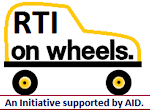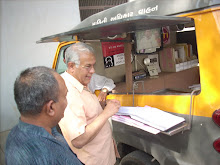The
Hans India: New Delhi: Sunday, 18 October 2015.
10 years on,
only 5 CMs have made proactive disclosures under the Act
The RTI act
is now 10 years old. One of the most important provisions of the act is the
proactive disclosure under Section 4. Even after 10 years, the PMO &
several CMOs are guilty of not making proactive disclosure on their websites.
The Right to
Information Act (RTI) has completed a decade of its existence and even the
Prime Minister acknowledged its role in bringing about a transformation in
governance. One part of the RTI legislation that hasn’t attracted enough
attention by the government is Section 4 disclosures.
It is
disappointing to note that the highest seats of the power (PMO & CMOs) are
themselves guilty of not implementing the RTI act. They are expected to stand
as the right example to other departments and not the other way.
Despite
repeated reminders by the Department of Personnel & Training (DoPT), many
government departments are yet to implement Section 4 of the RTI act in toto.
This Section mandates government departments (public authorities) to
proactively disclose certain information, so that the need for filing an
application would come down. Some of the information in Section 4 is immensely
helpful to the common man.
Factly, the
website for ‘Making Public Data Meaningful’, analysed the Section 4 disclosures
made by the Prime Minister’s Office (PMO) and the various Chief Minister
Offices (CMOs) since they are the highest seats of power in the country.
The PMO has a
dedicated RTI page on the portal. This page has details of Public Information
Officer (PIO), foreign & domestic tours of the PM along with expenditure,
assets/liabilities of the Union Cabinet members, etc. But the Section 4
disclosures are absent on the PMO website.
Out of the 31
States/UTs, only 20 (65%) of them have a dedicated website for the CMO.Surprisingly,
11 (35%) States/UTs do not have a dedicated website for the CMO, including
Punjab, Maharashtra, Delhi and Tamil Nadu.
Some CMs have
personal websites, but do not have an official website for the CMO. It is
surprising that even in this age of Digital India, the Chief Minister, who is
the executive head of the state, does not have a dedicated website.
Out of the 20
States/UTs with a dedicated website, 12 (60%) of them do not have any
information on RTI. States like Gujarat, Sikkim, Telangana, Madhya Pradesh,
Chhattisgarh, West Bengal, Jharkhand, and Haryana are part of this list.
Only 8 states
(40%) have RTI information on the CMO website, namely Jammu & Kashmir, Uttarakhand, Rajasthan, Uttar Pradesh, Bihar,
Odisha, Karnataka & Kerala. Even taking those states into consideration
that do not have a dedicated website for the CMO, only 14 (45%) of them had RTI
details of the CMO on the official government website. In other words, 6 states
that did not have a dedicated website for the CMO still had RTI details of the
CMO in some other government website.
Out of the 14
States/UTs with RTI details, only 9 of them (29%) had details of the Public
Information Officer (PIO) and the Assistant Public Information Officer (APIO),
the nodal officers in charge of RTI implementation in government departments.
Only 5 States
(16%) had proactive disclosure of the CMO, on the website, as mandated under
Section 4 of the RTI. These five states
are Jammu & Kashmir, Punjab, Uttar Pradesh, Maharashtra and Karnataka.
Only in one
out of every 6 States, the CMO has made proactive disclosure as mandated by the
RTI act even after 10 years.Within these five states, Jammu & Kashmir and
Punjab CMOs have made their disclosure only in English. In Maharashtra, the
disclosure was made only in the local language.
In Uttar
Pradesh and Karnataka, the disclosure was made in both English & the local
language. The CMO of Uttar Pradesh does best as far as RTI disclosure is
concerned.
The
disclosures are detailed and are available in both English and Hindi. In the
other 4 states that have made proactive disclosure of the CMO, some of the
details are outdated.
















































































